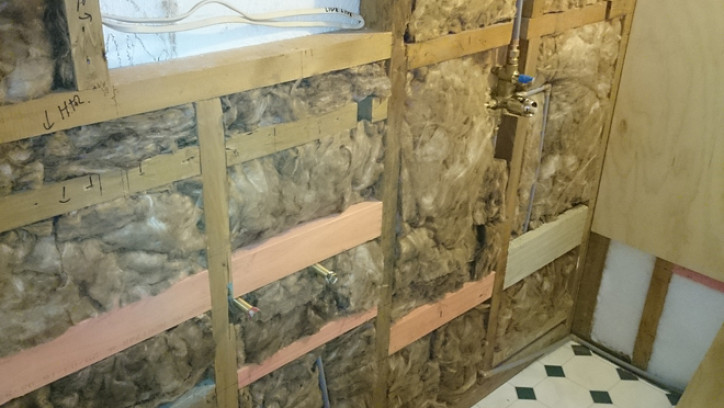Insulating your home
Last updated: 9 August 2023

Insulation is essential to keep your home warm in winter and cool in summer.
Why insulate?
A well-insulated home will provide year-round comfort, and cost less to heat and cool. Insulation also helps to reduce noise levels and condensation. Not only is a well-insulated house more comfortable, it can be cheaper to heat, have less mould and mildew, and be less conducive to allergy-aggravating dust mites.
New homes, if designed, insulated and ventilated well, can have minimal heating or cooling requirements in many parts of New Zealand. Hour-by-hour computer modelling can be used to optimise the design and determine any additional costs.
TIP - Explore your options
In many cases, the insulation that you put in at the start will remain for the life of the building. This is particularly the case for external walls, skillion ceilings and concrete slabs.
If you would like to upgrade the thermal envelope of your new home, talk to your designer about ways to save money upfront, particularly on items that can be easily replaced later. There are alternative construction methods available that provide a continuous layer of insulation around the outside of the house.
Construction systems has more information, and talk to your designer about your options.
How much insulation is enough?
Insulation ratings
The effectiveness of insulation is measured by its R-value. Heat always tries to flow from a warmer place to a colder place. Insulation reduces this heat flow – and the R-value measures its resistance to heat flow. The higher the R-value on an insulation product, the more it slows down the transfer of heat.
Different insulation products have different R-values – some materials insulate better than others at the same thickness and some need to be thicker than others to get the R-value you need. Density also affects the performance of a product, so in some cases insulation materials of the same type and thickness may have different R-values.
Using product R-values will help you to easily compare the effectiveness of different insulation products. For bulk insulation, product R-values are provided for a specific thickness and density of material.
The more the better
It's well worth spending a little extra and exceeding the minimum Building Code requirements to ensure your home is as warm and comfortable as it can be (with the added bonus of lower power bills).
Under the Building Code, new homes and additions to existing homes must be insulated to meet or exceed minimum requirements. There are also insulation requirements in the Building Code to limit condensation inside. This includes the use of thermal breaks, particularly for steel-framing.
Energy efficiency and Internal moisture on the Building Performance website have more information.
It is a good idea to insulate the outside of concrete and solid timber walls and underneath and around the edge of concrete floors if you want to make the most of the benefits of thermal mass.
Passive heating and Passive cooling have more information.
Leaving the inside mass exposed to the interior means the concrete or timber can absorb heat and release it back into the building, while the insulation means the heat is released inside rather than to the ground or the outside.
Increasing the R values of the window panes and frames and insulation in your floor, walls and ceiling are great ways to improve the thermally efficiency of a house.
Glazing and glass options has more information.
Another option is to reduce the amount of thermal bridging, which is heat loss through non-insulated elements of floors, walls and ceilings.
For example, the timber framing in a typical house is a thermal bridge because heat flows through the timber more easily than through the insulation.
The amount of thermal bridging can be reduced by using less but stronger framing. You can do this by moving to 140mm deep wall framing at wider spacings, choosing a roof system with fewer but deeper rafters or trusses. Deeper cavities also let you put in more insulation for higher thermal performance. Insulating over the top of roof truss chords (as well as between them) is a simple and very effective way of improving the thermal performance of ceilings.
You may also want to consider non-traditional construction systems which provide a continuous layer of thermal insulation around the outside of the house. These include options such as structural insulated panels (SIPs), or staggered stud construction. Talk to your designer or architect about your options at the very start of the planning process.
Construction systems has more information.
Retrofitting insulation
If you are retrofitting insulation into an existing property, your options will be a little more limited than if you were building a new home – but there is still a lot you can do. Typically the first places to insulate are ceilings and under floors because it is easy and cost-effective in many homes. As of 1 July 2019, all private rental properties will be required to meet or exceed requirements around ceiling and underfloor insulation wherever it is practical to do so.
Insulation requirements under the RTA on the Tenancy Services website has more information.
Downlights
If you have older-style downlights installed in your ceiling, they will reduce the effectiveness of your insulation because you will need to leave gaps above and around the light cans. Newer Insulation Contact (IC) and Insulation Contact – Fire Resistant rated (IC-F) LED downlights largely avoid these gaps.
Downlights has more information.
TIP - Insulation safety
Insulation safety on MBIE Tenancy Services website has information on how to install insulation safely and well.